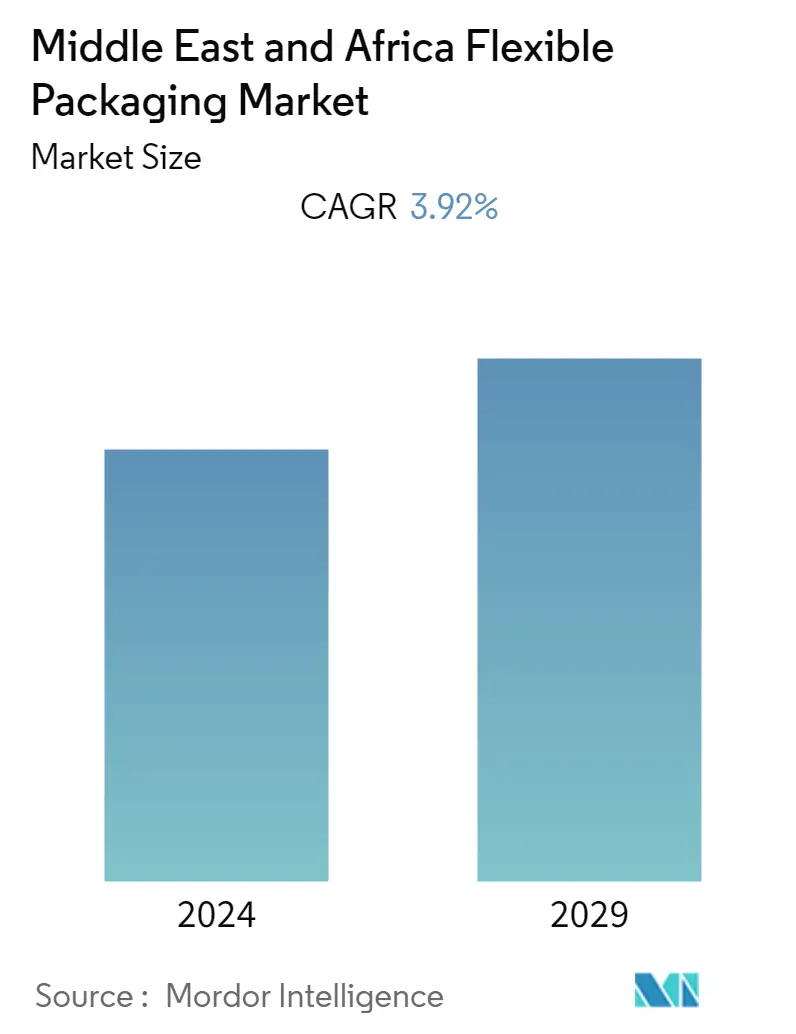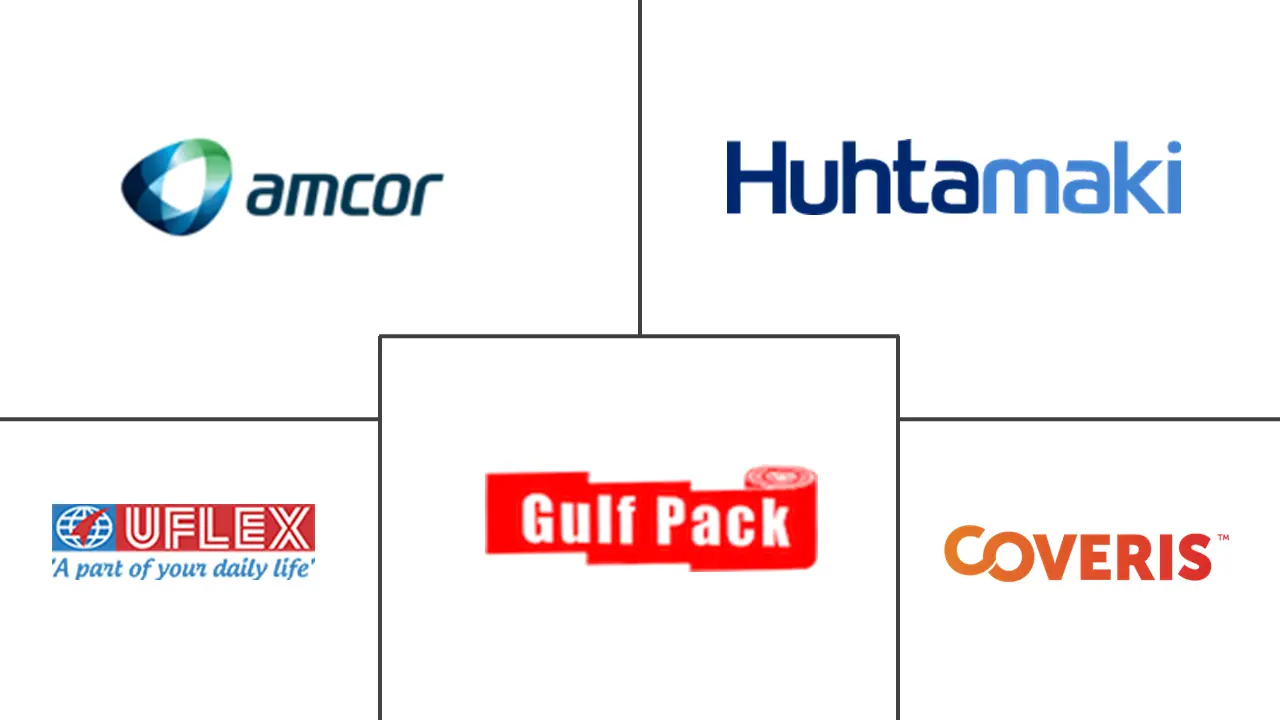Market Size of Middle East and Africa Flexible Packaging Industry

| Study Period | 2019 - 2029 |
| Base Year For Estimation | 2023 |
| Forecast Data Period | 2024 - 2029 |
| Historical Data Period | 2019 - 2022 |
| CAGR | 3.92 % |
| Market Concentration | Medium |
Major Players
*Disclaimer: Major Players sorted in no particular order |
Need a report that reflects how COVID-19 has impacted this market and its growth?
MEA Flexible Packaging Market Analysis
The Middle East and Africa Flexible Packaging Market are expected to register a CAGR of 3.92% over the forecast period (2022 - 2027). Flexible packaging refers to using non-rigid materials to package items, entitling to more cost-effective and adaptable solutions. It is a relatively recent packaging method that has increased in popularity due to its superior efficiency and low cost.
- The flexible packaging business sets major packaging trends by boosting safety, design flexibility, convenience, and sustainability. Technical advancements and innovative design have resulted in a multitude of advantages. Regenerative Gasification, for instance, is a science-based solution to the intractable recycling issues faced by modern multi-layered, multi-material products and packaging.
- The boost comes when Gulf countries are rushing to promote environmentally friendly lifestyles. As part of a more comprehensive goal to reduce plastic consumption, Abu Dhabi has already banned single-use plastic bags. The United Arab Emirates, which will host the COP28 meeting in 2023, has also released a Circular Economy Policy that promises to assist businesses in adopting environmentally friendly production practices. Moreover, Saudi Arabia recently pledged to achieve net-zero emissions by 2060.
- In addition, according to the Flexible Packaging Association, food and beverages account for over 2/3 of all packaging, and flexible packaging accounts for roughly 90% of this. Flexible packaging's benefits are also propelling it into new product categories. Therefore the significant demand from the food and beverage sector is analyzed to boost the flexible packaging market.
- With the breakout of COVID-19, flexible packaging makers have been inundated with several challenges. Supply chain interruptions, a lack of raw materials utilized in the manufacturing process, workforce shortages, fluctuating pricing that could cause the final product's production to inflate and go over budget, shipping issues, and so on are the implications of lockdown.
- Flexible packaging's perceived value is hampered by the premise that its composite materials are complex for consumers and recycling centers to recycle. It functions well at all other points in the product life cycle except for end-of-life. This is analyzed to pose a challenge for the market during the forecast period.
